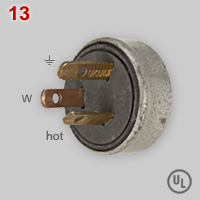Tony S
Senior Member
- Location
- Resting under the Major Oak UK
The BS1363 plug is ridiculous. Other than the sleeved pins, the Euro plug is much better.
So which part of BS1363 is ridiculous?
The ability to fuse the line side supply to suit an appliance?
The tamper-proof access to the line and neutral connections as standard?
That the earth pin (ground) has to be in place before the L+N pins can connect?
The L+N pins are insulated as standard?
You now have TP receptacles. We on the other hand have had BS1363 since 1947 so we have a bit of experience with them. I really don’t want an argument about this.



